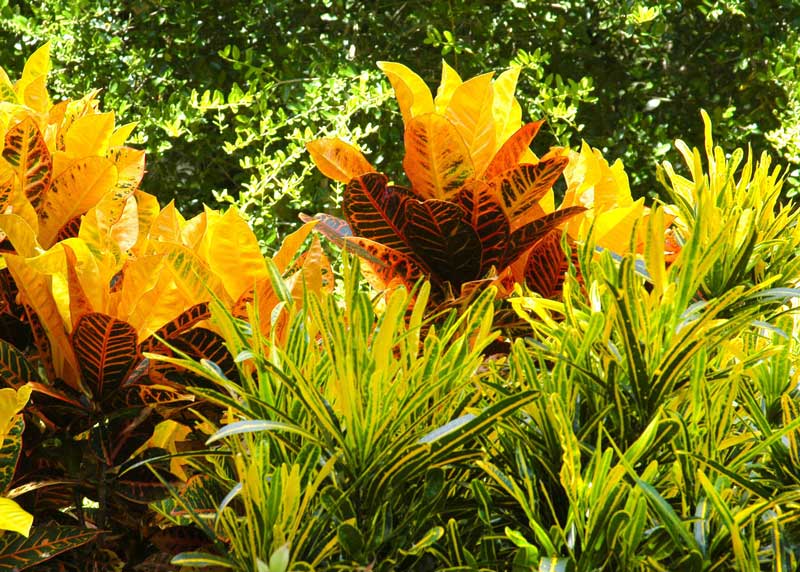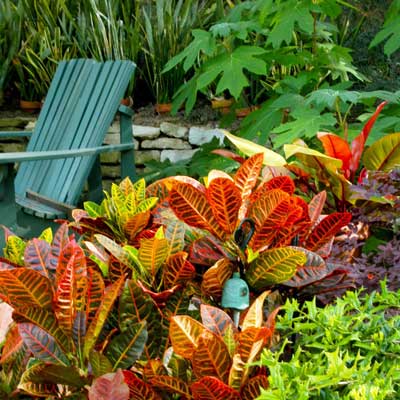Crotons Add Zing to the Season
We’re using crotons as seasonal color spring until frost, and growers are feeding our urge. There are many great varieties, and they’re all ready to dazzle your eye. No plant that we grow has any more dramatic shades of fall colors.
Light is the big issue for crotons. They’ll be completely green (lacking the striking variegation) if you grow them outdoors in shade. And it gets even worse if you try to overwinter them in a dark spot in your home or garage. The old leaves soon drop, and the new leaves that are produced are completely green and uninteresting. So bright light is a starting point.

Most of my crotons are in full morning sun until 10 or 11 a.m. in summer, then I give them protection from large trees the balance of the day. That’s enough light to color them up, but not so much that they’ll “go to green.”

Crotons need highly organic, lightweight potting soil. I include about 10 percent expanded shale with any potting soil I use. That gives the potting mix a little more weight (ballast), so the plants aren’t as likely to tip in the wind. I use pots that are approximately one-third as tall and wide as the plants are, and when the plants outgrow them, I repot them quickly.

Bring your crotons into a greenhouse or bright sunroom for winter. They’ll be ruined if you try to keep them from November until March in a garage or a dark corner of your house. If you have access to a greenhouse, put them in elevated positions so that they get all available sunlight in winter. If all else fails, you might put your plant on a plant dolly and shuttle it in and out as warm temperatures and low winds allow. Crotons should not be exposed to temperatures below 36-38 degrees, and certainly not down to freezing.
Keep your plants moist at all times, and apply a high-nitrogen, water-soluble plant food every few times that you water them.
If you decide you want to try your hand at propagating them, air layering is your best option. Check YouTube for videos of the process. It will work on rubber plants and many other tropicals as well.
